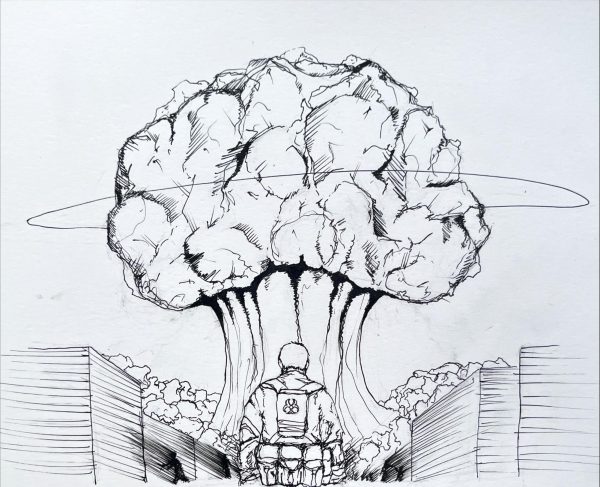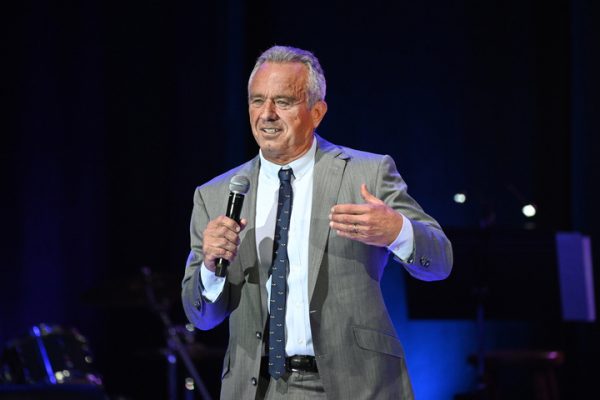What about Rehnquist?
September 16, 2005
John Roberts is too young to be a Chief Justice!
John Roberts has an excellent court background!
John Roberts is too much of an activist!
John Roberts doesn’t like you!
These are all cries we’ve heard since Sept. 4. They’re all valid arguments, well except the last one. The debate as to whether or not Roberts is a qualified candidate for Chief Justice of the U.S. Supreme Court is a valid and important one. It’s a debate we should have both in Congress and on the editorial pages of newspapers around the country.
However, what has been lost in the shuffle of this debate is the reason for its validity. That reason being the death of Chief Justice William Rehnquist.
Rehnquist began on the Supreme Court 33 years ago, making him the member of the court with the longest tenure at the time of his death. He became the Chief Justice in 1986, and stayed in that position until his death. What is important to remember about Justice Rehnquist is not the length which he served, but the manner he did so.
In a Washington Post article from Sept. 5 Mark Tushnet, a professor at the Georgetown University Law Center said, “When the history of the Supreme Court in the 20th century is written, there will be two great chief justices: Earl Warren and William Rehnquist.”
Rehnquist was an orderly man who brought structure to the court. As Chief Justice, he allowed each Justice, by seniority, an opportunity to speak on a subject. There was no bickering or heated debate. The court was run as it should be – in a stately manner.
Rehnquist was also a man entirely dedicated to his job. The day after leaving the hospital in July, Rehnquist was back at work in the halls of the Supreme Court. There was speculation of his resignation for years, but he was so dedicated he would not resign until his health no longer permitted him to work. The position of Supreme Court Justice is a job for life. In Rehnquist’s case he took that to the extreme.
It is the very fact that few decisions of Justice Rehnquist’s courts ever caused much ruffle that makes his courts so respectable. Justice Rehnquist was a firm believer in Stare Decisis. In Justice Rehnquist’s own terms, Stare Decisis means “the principle that once an issue has been decided, it should stay decided.” This is exactly what Rehnquist’s courts did. While his courts did much to advance police officer’s legal right, to trim down the appeals process and put constitutional limits on federal power, Justice Rehnquist let other issues he disagreed with stand – most notably Roe V. Wade. Justice Rehnquist was one of only two Justices to vote against Roe v. Wade while an under Justice. However, his court never overturned the decision. It was the restraint which defined the Rehnquist Court.
Most people can’t name all nine Supreme Court Justices. (Stevens, Scalia, Thomas, Ginsberg, Souter, Edwards, Breyer and Souter are the eight left). However, they are arguably the most important people in our government.
For 19 years Justice Rehnquist was the leader of this group. Though he made some changes to distinguish himself as the leader – adding four gold rings to the sleeves of his robe – he still maintained temperance and a reverence for the role of the Supreme Court. For this, among with many other things, Justice Rehnquist, and with his predecessor Justice Warren, will be remembered as the two great Justices of the 20th century.
Congress is done questioning John Roberts. It took three days and consisted of what seemed like thousands of questions. However, after listening to multiple hours of the hearing I failed to hear what would have been the best question any Senator could ask: “Do you plan to run the Court in the same manner as Chief Justice Rehnquist?” If yes, no matter his values or beliefs, John Roberts is the man for the job.
We should take a moment to reflect on the important work of Chief Justice Rehnquist, learn lessons from his actions and hope Supreme Courts of the future can operate with the dignity and class of the Rehnquist Courts.













